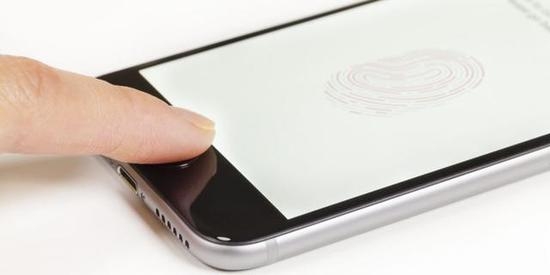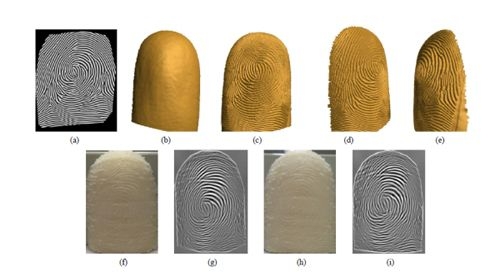Think very fear! U.S. experts use 3D printing technology to unlock the dead cell phone to help the police solve the case

In terms of privacy protection, the police and the scientific and technological community always have irreconcilable contradictions. However, some people will understand this except that some people firmly resist the police's request to decrypt the user's equipment. Thus, this part of the people became the object of the police for help.
Recently, Professor Anil Jain from Michigan State University’s biometrics technology field welcomed a group of "uninvited guests" - law enforcement personnel from Michigan. The law enforcement officers' visit was to seek help from the professor. He hoped that Jain could help them unlock a dead cell phone.
Professor Jain has made achievements in biometrics, especially facial recognition, fingerprint scanning and tattoo matching technology, and has always been committed to using biometrics for encryption. He hopes to strengthen the difficulty of cracking this technology, making it impossible for hackers to start. However, it can be encrypted to know how to decrypt it. The police want him to do something opposite to encryption.
According to reports, the case described by the police was roughly as follows: A man was murdered, and Michigan police believe that he may find some clues in his cell phone. However, they cannot unlock the phone due to no password or fingerprint. Since the person's fingerprint was recorded in the police system (the deceased person was arrested), the law enforcement officers did not seek assistance from the mobile phone manufacturer, but found Jain, hoping that he could use 3D printing technology to copy the fingerprint of the deceased, so that the deceased unlocked the phone. .
Sunpreet Arora said that because it was not known which finger the deceased was using to unlock the phone (although, as most people were used to, it was the thumb or forefinger), they made copies of all 10 fingers.

However, it may not be enough to unlock the phone with only 3D printed fingers. Most cell phone fingerprint readers today use capacitive technology and therefore need to rely on closed microcircuits to work properly. Fingerprints on the fingers cause some of the circuits to come into contact with each other, creating a fingerprint image, which is due to the conductivity of the skin sufficient to close these circuits. However, if printed replicas made of plastic do not have such conductivity. So Arora covered a thin layer of metal particles outside the 3D-printed fingers, allowing the fingerprint scanner to read the replicas smoothly.
However, this method is still not perfect. Arora is still improving. He has not provided copies of his fingers to the police to unlock the victim’s mobile phone. However, he said that after a few weeks, after he had conducted enough tests, he would hand over copies of his fingers to the police. By that time, the police will use a 3D printed copy of the deceased finger to unlock his cell phone.
All along, the security and privacy issues of mobile phones are hot topics that people are concerned about. You may remember that Apple appealed to the court because of the FBI's request to unlock the user's mobile phone. Last December, FBI in the investigation of the terrorist attacks in the California San Bernardino happen, because the suspect Farouk held an Apple phone has a power-on password can not be opened this phone to complete the investigation, FBI requirements Apple cooperated with the unlocking and requested that it design a related software so that law enforcement agencies could bypass these encryption programs when needed to obtain information on “criminalsâ€. Apple Inc. flatly refused and both parties appealed to the court. Although the appeals of the two cases are different, Bryan Choi, a researcher who specializes in security, law, and technology, believes that the Michigan police's move is also against the law and is simply ignored because the person has died.
The key question is whether this technology should be used in other cases, such as cases where the suspect is still alive. If this method succeeds, then the police only need to get a person's fingerprint and obtain authorization from the court to obtain their mobile phone data (U.S. Supreme Court ruled in 2013 that the police need to obtain approval from the court to search the contents of a person's mobile phone) .
“There is a difference between fingerprint passwords and traditional passwords.†Bryan Choi said, “The Fifth Amendment of the U.S. Constitution stipulates that government agencies must not force suspects to provide content that is remembered in the brain, such as passwords.â€
So, the password in the mind may be protected by the Fifth Amendment, and fingerprints are not. In 2014, a court in Virginia, the United States, ruled that the police had the right to require suspects to use their fingerprints to unlock the phone.
Bryan Choi believes that mobile phones should be viewed as an extension of thinking and should therefore be protected by the Fifth Amendment, not just the Fourth Amendment (protecting citizens from illegal searches and seizures). He believes that mobile phones are different from our other personal items.
“We record a large amount of personal thoughts, data, and behavior on our mobile phones. Publishing them in court is like drawing ideas out of thinking and making them public.â€
However, no matter what, Professor Jain said that he is willing to help the police: “We are totally out of interest.â€
It is worth mentioning that since it is not yet clear what type of mobile phone the deceased is using, in modern smart phones, if the user has not used the fingerprint to unlock for more than 48 hours, he still needs to enter the password the next time he unlocks the mobile phone. . Therefore, the police may still encounter password problems when unlocking the phone.
Via nydailynews